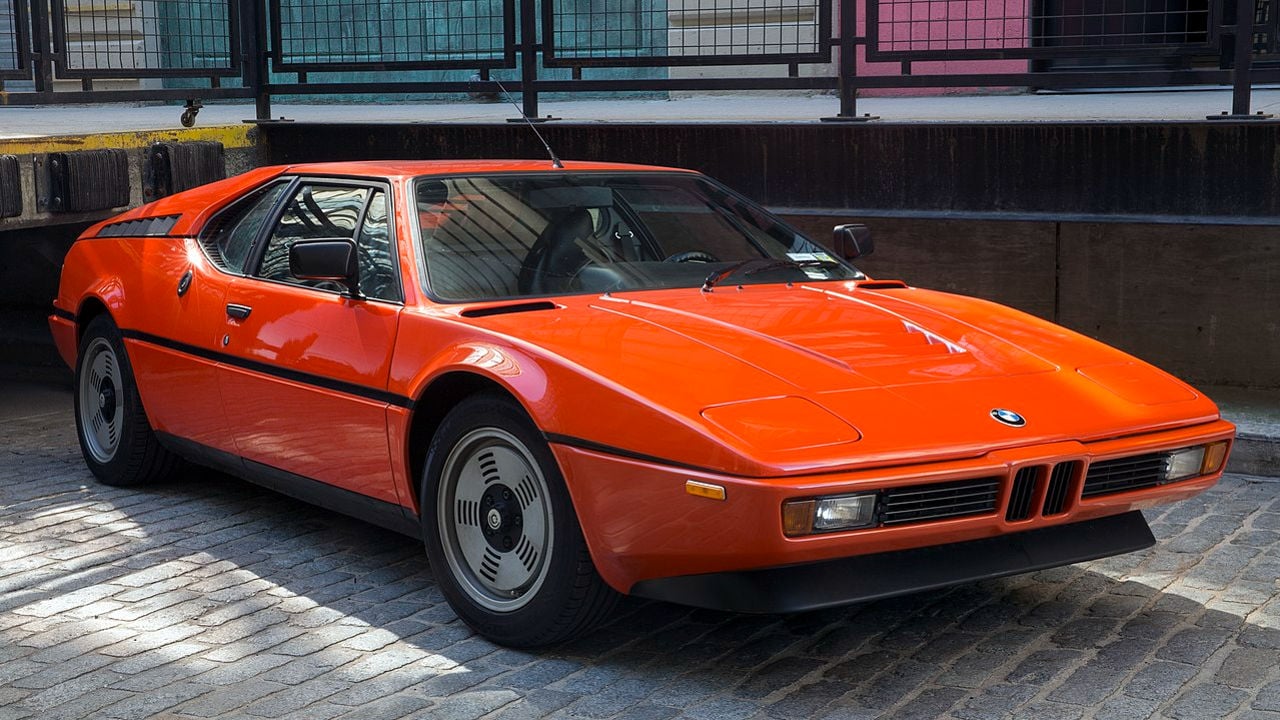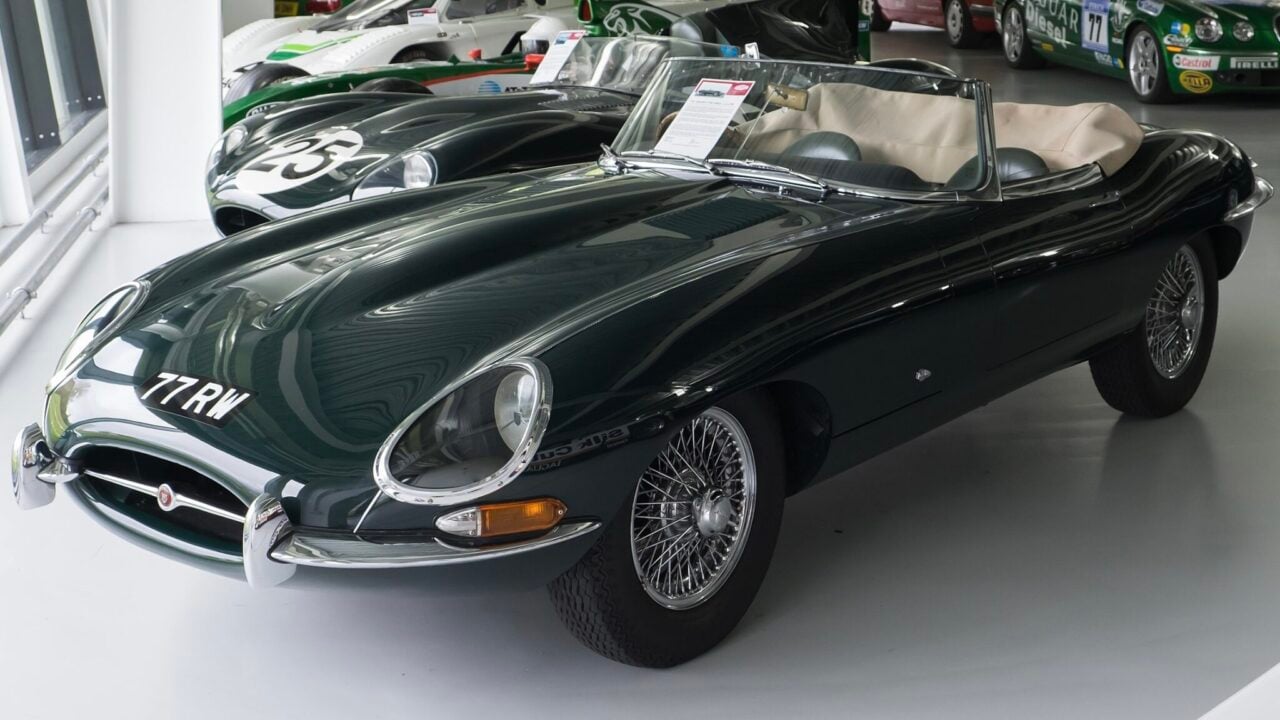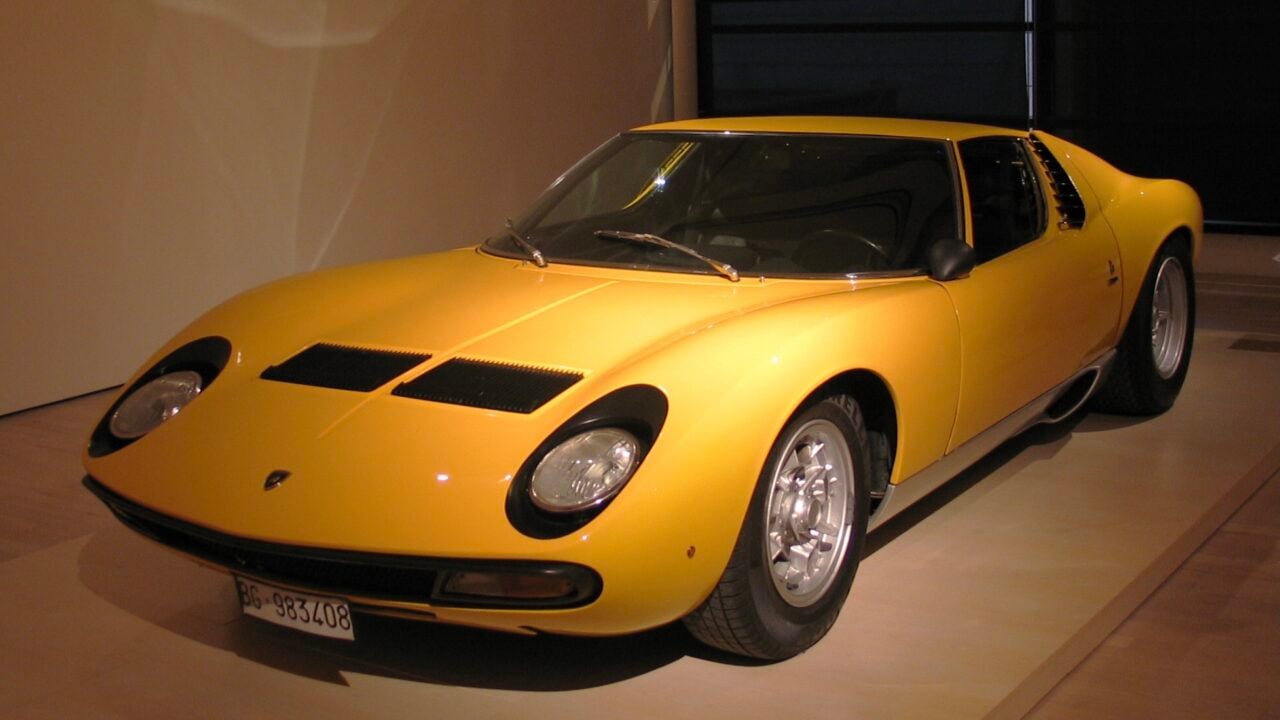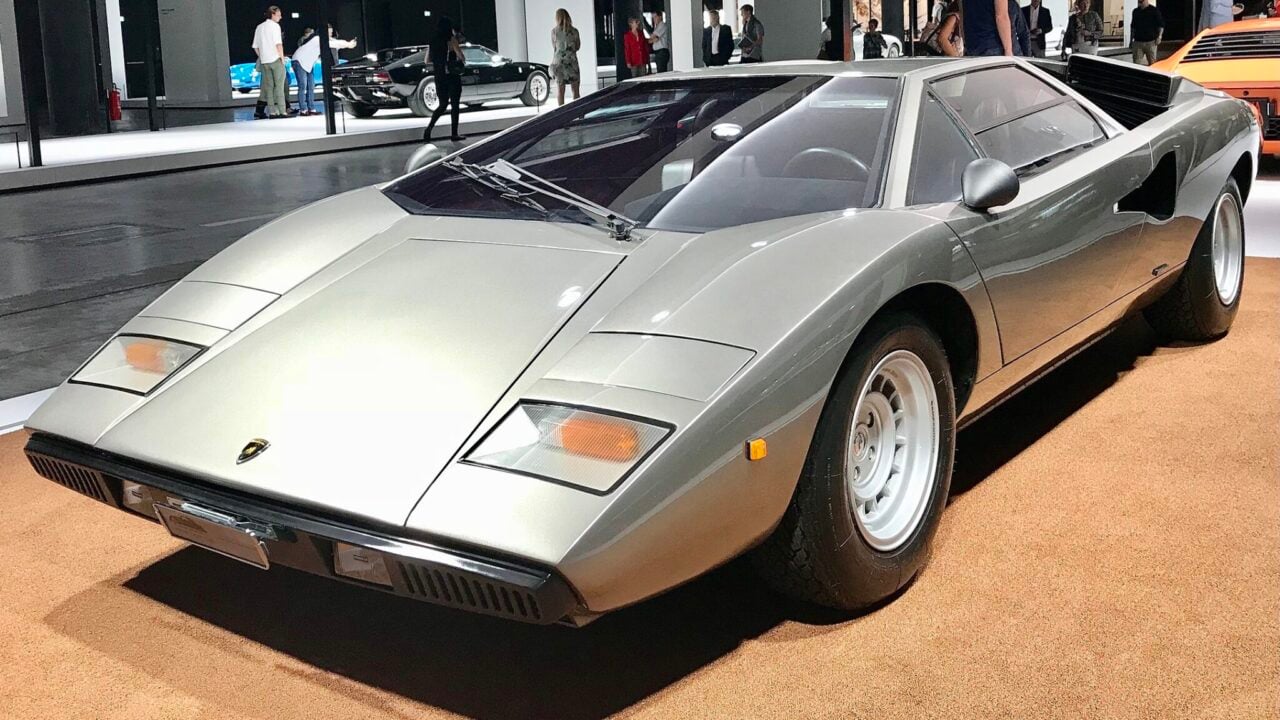24 Cars That Achieved Instant Classic Status

The majority of cars tend to follow a rather conventional lifecycle. Once they have outlived their usefulness, they head off to the scrapyard to be recycled into a set of kitchen knives or perhaps a nice outdoor table and chair set.
Certain special cars buck this trend, becoming more valuable and desirable as they age. And then there are the exceptional models that become desirable modern classics practically the moment they roll off the production line. While there aren't many, we have scoured the archives to bring you 24 of the best ‘instant classic' cars ever built.
1962 AC Cobra

Automotive history is littered with great collaborations between American and European auto manufacturers. One of the most successful was between automotive designer Carroll Shelby and the British AC Cars company.
AC supplied Shelby with a modified version of their AC Ace roadster, Ford provided their new lightweight 3.6-liter V8 and the AC Cobra was born. Shelby continued developing the basic platform for years, and eventually fitted a 425-horsepower fire-breathing 7.0-liter V8 under its hood. The Cobra has been copied the world over, but none can claim the true classic car status of the original
1963 Aston Martin DB5

The DB5 didn’t need to be featured in the James Bond films to achieve its instant classic status, but it certainly didn’t hurt. It’s appearance in numerous Bond movies over the years has made the Aston Martin DB5 one of the most recognizable classic cars in the world.
It remains a sublime GT car, with effortless performance from its 280 horsepower 4.0-liter inline-six motor, but the DB5’s greatest asset is its beautifully designed bodywork. Just over 1,000 units were built, making it rather rare.
1994 Audi RS2 Avant

Audi is synonymous with fast station wagons these days, but it is the RS2 Avant that set the ball rolling back in 1994. Audi fitted a Porsche-modified version of its turbocharged inline-five motor in the RS2, and with the benefit of grippy all-wheel-drive, it launched to 60mph in just under 5.0-seconds.
The Porsche-designed brakes helped bring the 311 horsepower ‘family’ car to a safe stop. Production was limited to around 3,000 cars, making these the rarest and most desirable RS wagons.
1978 BMW M1

BMW’s very first M (for motorsport) road car was the rather stunning M1. BMW wanted to develop a race car for the Group 5 race series and needed 400 road-going versions for homologation purposes.
Designed by Giorgetto Giugiaro, the M1 combined Italian flair with cutting-edge German mechanicals. The motorsport-derived 280 horsepower 3.5-liter inline-six engine was mid-mounted to ensure the best handling possible. By the time the road legal M1 was ready, the racing rules had changed, but it proved competitive in various other racing series well into the mid-1980s.
1998 BMW M5 E39

Peak BMW to many enthusiasts was achieved in the late 1990s and early 2000s. The third-generation M5 arrived right in the middle of this golden era, sporting a 394 horsepower 5.0-liter V8 and handling to match.
It was capable of 186 mph with the speed limiter removed and was the fastest acceleration four-door sedan when launched. While its acceleration figures have long since been eclipsed, few cars can match its poise and balance even 25-years later.
1936 Bugatti Type 57SC Atlantic

Anyone under 100 years old could be forgiven for not knowing what a Bugatti Type 57SC Atlantic even looks like, but this stunning piece of engineering was one of the most advanced cars of its time.
Back in the 1930s when achieving 50mph was something to brag about, the 57SC (The SC stood for lowered and supercharged) produced over 200 horsepower and could top 120mph. A true supercar of its era. 710 were build between 1934-1940 and when one comes up for auction it changes hands for millions of dollars.
1953 Chevrolet Corvette

The Corvette has become a mainstay of American performance cars ever since the first model rolled off the line in 1953. Early versions had the style but made do with a less-than-sporty 150hp six-cylinder motor.
Things really got moving in 1956 when an optional 4.4-liter V8 became available, and each successive generation of Corvette has delivered a mix of performance, pricing and style that has been very hard to match.
1991 Dodge Viper

The Dodge Viper was initially conceived as a modern-day Cobra. But instead of shoehorning in a big capacity V8, Dodge decided to use an even bigger 8.0-liter V10. Developing 400 horsepower, the Viper could launch from 0-60mph in around 4.5-seconds.
The public loved it and it remained in production (with updates) until 2017, where the final versions were fitted with even larger 8.4-liter V10 motors producing up to 645 horsepower. Just enough to see off those pesky European sports cars at the lights.
1964 Ford GT40

The Ford GT40 road car exists because a deal to buy out Ferrari in the early 1960s went sour. Henry Ford II instructed his engineers to develop a Ferrari-beating race car, and with the assistance of Carroll Shelby and his team, they did just that.
The GT40 was also made available in road car trim in limited numbers and came fitted with a variety of V8 powerplants. Regardless of the spec, every GT40 was capable of serious performance. Modern variants like the 2005 and 2016 GT models play homage to this iconic original.
1965 Ford Mustang

The Mustang is one of the most successful sports cars of all time, with over 1-million units sold just two years after launch. It spawned a whole industry of competitors like the Camaro and Challenger.
Initially available with a range of six- and eight-cylinder engines, the Mustang was continuously updated to stay ahead of the competition. Now in its seventh generation, it continues to be the most popular pony car around.
1987 Ferrari F40

Ferrari has a long history of releasing spectacular road cars that are destined for classic status. The Ferrari F40 is one that hit that sweet spot almost as soon as it was launched. Developed from the 288 GTO, the F40 (named to celebrate Ferrari’s 40 birthday) was a raw and visceral race car for the road.
Developing 478 horsepower from its twin-turbo 3.0-liter V8, the lightweight carbon-fiber bodywork and stripped out interior gave the F40 a very low curb weight and the performance to beat the fastest cars of its time. It also didn’t hurt that it was (and still is) one of the most stunning Ferraris of all time.
1948 Jaguar XK120

Jaguar’s first sportscar after the end of WWII wasn’t just an impressive piece of engineering, it was a design masterpiece that looked great from any angle. The advanced 160 horsepower 3.4-liter inline-six fitted to the XK120 gave it a 120mph top speed (hence the name), making it the fastest production car of its time.
The XK140 and XK150 followed, delivering a mix of performance and style that was unparalleled for the price.
1961 Jaguar E-Type

One would think that after the XK, Jaguar would be all out of ideas, but the E-Type that followed was arguably even more impressive. The swooping hood and flowing lines of the E-Type gave it a sporty demeanor that no competitor could match at the price.
Performance was on par with most contemporary exotics, although by the time production ended, the Series 3 E-Type had morphed into an altogether softer GT, ditching the inline-six engines for a more laid-back V12 and a heavier 2+2 bodyshell.
1966 Lamborghini Miura

The Miura is often cited as being the world’s first supercar. Lamborghini certainly hadn’t built anything like it up until that point, no one had. The unique mid-engined layout gave the Miura a low center of gravity and the Gandini-styled bodywork remains one of the most stunning automotive designs ever created.
Power output from the 3.9-liter V12 rose from 345 horsepower to 380 horsepower by the time production ended, and while its performance numbers may have long been eclipsed, those looks remain as eye-catching as they day it was unveiled.
1974 Lamborghini Countach

Trying to develop a replacement for the game-changing Miura must have kept Ferruccio Lamborghini up at nights. He shouldn’t have worried, because the Countach became one of the most successful and recognizable Lamborghinis ever built.
From the original LP400s to the crazy bewinged LP5000 final editions, the Countach has always been an integral part of motoring culture. Every model had a mid-mounted V12, ranging from 3.9 to 5.2-liters, impressive performance, and virtually no rearward visibility. Not that it mattered when it could do 170mph+.
2010 Lexus LFA

Lexus built its reputation with cars like the LS400, an over-engineered luxury car that forced Mercedes and BMW to up their game. In 2010 it showed the world that its brand of cutting-edge tech and fanatical attention to detail worked just as well with supercars.
The LFA started development way back in 2000, but constant improvements and a switch from aluminum to carbon fiber construction delayed its release. The wait was worth it, its 563 horsepower 4.8-liter V10 sounded intense, and the driving experience was sublime. Just 500 cars were built.
1992 McLaren F

The McLaren F1 is the sort of car that comes around once in a lifetime. The formula to its success comprised of (almost) unlimited development funding, the input of two world class designers in the form of Gordon Murray and Peter Stevens, and the development of one of the world’s greatest engines, courtesy of BMW.
The 627 horsepower 6.1-liter V12 engine gave the F1 unrivalled acceleration, and a 240.1mph top speed that took over a decade to better. The central driving position, gold-lined engine bay and full carbon fiber body were just some of the highlights of a car that redefined the term ‘fast’ forever.
1954 Mercedes-Benz 300SL Gullwing

Mercedes-Benz has been at the forefront of innovation for decades, and the 1950s 300SL was a tour-de-force in engineering prowess that was almost impossible to match. While its visually arresting gullwing doors were impressive, the fuel-injected 3.0-liter engine was a masterpiece that delivered world-beating performance.
It became an instant success, and spawned a series of cutting-edge SL (which stood for Super Light) models that continues to this day.
1963 Mercedes-Benz 600

By the 1950s and ‘60s Mercedes had built an enviable reputation as one of the world’s preeminent luxury car manufacturers. The 600 Grosser (Meaning Grand in German) was the model that secured its place at the top of the list. It soon became a favorite of world leaders, millionaires and celebrities across the globe.
Equipped with a newly designed 250 horsepower 6.3-liter V8, it wafted along effortlessly. Air suspension and hydraulically controlled windows, doors and seats made it stand out from just about every other luxury vehicle on offer. The long-wheelbase models were the most luxurious and continue to be highly sought-after classics.
1989 Nissan GT-R 32

Every motoring legend has to start somewhere, and the GT-R nameplate was first used on a spicy rear-wheel-drive Nissan sedan in 1969. But the GT-R formula as we know it came into being in 1989, that car was called the Skyline GT-R 32.
It used the iconic RB26DETT inline-six engine, which made a government regulated 280 horsepower. The advanced all-wheel-drive system gave the R-32 unbeatable acceleration in slippery conditions, and enthusiasts soon found out that the engine could be pushed to 400 horsepower and beyond with relatively minor modifications.
1970 Plymouth Superbird

Thanks to NASCAR legend Richard Petty, the world got to experience one of the maddest muscle cars ever built. Back in 1970, Chrysler developed a streamlined NASCAR competitor to take on the Dodge Chargers that Petty had been driving with great success. 1,935 road cars needed to be built for homologation purposes and the Plymouth Superbird was the result.
Its crazy two-foot-tall rear wing and elongated nose cone gave it a very distinctive look, and performance from its 425 horsepower Hemi V8 was pulverizing. Built for just one year, the Superbird is one of the most collectable American classics ever.
1973 Porsche 911 RS

There are countless special edition Porsches out there, but the one that is arguably the most desirable is the 1973 911 RS. It was developed to meet racing homologation requirements and featured thinner gauge steel, a more powerful motor and ducktail rear spoiler.
The 2.7-liter motor pushed out 210 horsepower, which gave the 2,300-pound sports car electrifying performance. Those who have had the chance to own or drive one say that it is one of the best-balanced sports cars ever made. No wonder prices can exceed $2,5 million for the best examples.
2004 Porsche Carrera GT

Considered by many to be the last analog super car, the Porsche Carrera GT delivers an intense and engaging driving experience. Core to its appeal is the mid-mounted 603 horsepower 5.7-liter V10 engine.
Mated to a manual transmission and powering the rear wheels, this is not a car to take liberties with unless you have the reflexes of a racing driver. With just under 1,300 units sold, the Carrera GT is quite rare, which is a shame because hearing one howling by is a life-changing experience.
1994 Toyota Supra MK4

Not every car needs to be a pricey exotic to become an instant classic, the fourth-generation Toyota Supra did it by delivering a level of performance that could embarrass European exotics costing three times as much.
Just like the Nissan GT-R, the Supra used an in-house developed twin-turbo 3.0-liter inline six motor that was throttled back to 280 horsepower to meet legal requirements. It didn’t take long to discover that the 2JZ motor was capable of delivering twice that amount without much trouble. The tuner scene has never quite been the same since.